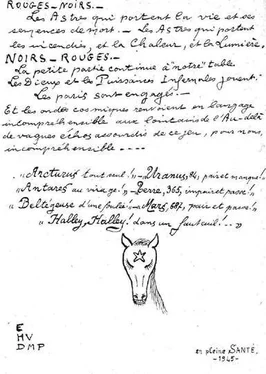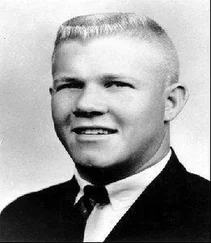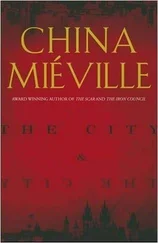French protests, however, soon took a different turn. On the morning of August 21, 1941, a twenty-two year-old French communist named Pierre-Félix Georges (code name “Fredo” or “Fabien,” later “Colonel Fabien”) killed a German naval cadet, Alphonse Moser, as he boarded a train at the Barbès-Rochechouart métro station. The Nazis responded ruthlessly. Kommandant von Gross-Paris, General Ernst Schaumburg, announced a new policy of creating a pool of “hostages” from all Frenchmen arrested or taken into custody and then choosing a number of them for execution “corresponding to the gravity of the case.” Six hostages were shot in reprisal for the murder of Moser.
But the severity of the punishment did not deter further attacks. The day after the announcement, two German officers were killed at Lille and then two more the following day in the Nord. This pattern was repeated throughout the autumn of 1941. An officer was gunned down at a métro station ticket window, a soldier knifed exiting a brothel; incendiaries, stolen from the Nazi depot, were tossed into a German hotel. A hand grenade was lobbed at a Nazi canteen; a bomb exploded at a German bookstore on the Place de la Sorbonne. Trains were derailed, cables were cut, and fuses in factories sabotaged. In December of that year alone, the German army estimated that there had been some 221 attacks against officers, soldiers, and property.
Resistance groups were now on the rise in Paris and elsewhere, especially after the Red Army repulsed the Nazi invasion and began to pursue the Wehrmacht on the Eastern Front. Inside France, a new German policy further swelled the ranks of Resistance. In February 1943, the Germans implemented the hated STO ( Service du travail obligatoire ), which required all Frenchmen aged twenty-one to twenty-three to serve two years of compulsory labor in Germany. By the end of the war, some 650,000 Frenchmen would be sent to the involuntary work program in war-related industries. To avoid this fate, young men fled to the countryside, leading to the spontaneous creation of bands of maquis , named after the Corsican word for thick scrubland and soon carrying connotations of a bandit or outlaw.
From remote bases in hills or mountains, many of the emerging “armies of the shadows” engaged in sabotage and attacks on German and Vichy authorities, ranging from disruption of railways to guerrilla-style raids. As they needed food and funds to survive, not to mention strike German targets, some gangs raided farms, robbed shops, and attacked people suspected of collaborating or profiteering on the black market. Some maquis became popular legends, like L’Hermine in the Drôme with his black cape and coat of arms. Other Frenchmen denounced them as criminals masquerading under a noble cause.
The STO was extended several times in 1943 and 1944, eventually making all men aged eighteen to sixty and childless women eighteen to forty-five liable to forced labor. As the number of defaulters increased dramatically in 1943 and 1944, and many law-abiding citizens came to their aid against this law widely regarded as arbitrary and unjust, the Germans threatened harsher punishment for evasion. “All close male relatives, brothers-in-law, cousins over age of 18 will be shot; all women similarly related will be sentenced to hard labor.” Children under the age of seventeen would be packed away to an “approved school.” The brutality and exploitation at the heart of the Occupation was evident to an increasing number of Frenchmen.
By the time Petiot was locked up in the Gestapo prison, the Resistance had gradually moved beyond individual acts of opposition and sabotage to become, as the socialist Jean Texcier put it, “a good occupation for the occupied.” Resistance newspapers and pamphlets all over Paris sounded the call to action. Albert Camus, who joined the editorial staff of Combat in the autumn of 1943, put it this way only days after the discovery of Petiot’s crime in March 1944: “Total war has been unleashed, and it calls for total resistance. You must resist because it does concern you, and there is only one France, not two.” Sympathizers, he warned, would be punished just as active Resistants. Now was the time to act.
AS the story of Petiot’s “murder house” broke, Albert Camus was holding rehearsals for his first play, Malentendu (The Misunderstanding). The plot revolved around owners of a hotel who recruited, entertained, and then robbed and killed their guests—a Petiot-esque project that would debut in June, ironically at the Théâtre des Mathurins, just across the street from Fourrier’s hair salon.
The piece was in fact inspired nine years before when Camus read a short item in the Associated Press about a young man who returned home to Yugoslavia only to be killed by his mother. Camus added the element of the disguised return and the twist that the family had, in his absence, transformed the hotel into a profitable slaughterhouse. Camus set the story instead in the distant Bohemian town of České Budějovice (Czech Budweis), which he had visited eight years before. His new lover, the actress Maria Casarès, played the sister.
Camus was coming to terms with his new life in Paris. At first, he had found the occupied city a dismal gray, like its pigeons and statues, and a stark contrast to the sun, sea, and shimmer of his native Algeria. He missed his favorite café, which was decorated with a guillotine and a skeleton and had a flamboyant manager who wandered the establishment with a dildo in his hand. And Camus also missed his wife, Francine, though he continued to have love affairs.
For a time, Camus had considered taking advantage of an escape agency to cross into Spain and then return to Algeria. He certainly had experience with clandestine departures. Before coming to France, Camus had helped men and women pass into Morocco with the hope of joining de Gaulle in London. Camus, however, soon abandoned the idea of leaving Paris, no matter how appalling the impact of the German Occupation was on intellectual life—Henri Jeanson compared it to living in a “madhouse run by the lunatics.” Camus instead concentrated on his work, which in the spring of 1944 also included writing at night on his new novel, The Plague , which would be set in a city overrun by rats.
As Camus put the final touches on his play about the murderous hotel owners, Jean-Paul Sartre was preparing for the opening of his No Exit , a one-act play that would debut on May 27, 1944, at the Théâtre du Vieux-Colombier. The story took place, appropriately enough for the Occupation, in hell. Sartre had first picked Camus to direct and play the lead male role of Garcin. The rehearsals, which had begun at Christmas 1943 at Camus’s or Simone de Beauvoir’s apartment, were suspended in February, when the actor playing the lead female role, Olga Barbezat, was arrested by the Gestapo and imprisoned at Fresnes. At this point, either Camus backed out of his commitment or Sartre decided to replace him. The result was the same. No Exit was staged with an established director and a professional cast.
The German-controlled press lambasted the play for its “immoralism,” but Sartre’s No Exit would prove to be a major success, particularly with the young. “Hell is other people” was the line most cited. Sartre later explained that he only meant that people judge themselves with criteria given by other people, and therefore, if and when relations sour, humanity falls into a state of “total dependence” resembling hell. Sartre’s popularity soared. After this piece, he became, in the words of Jean Paulhan, “the spiritual leader of thousands of young people.” The scholar Guillaume Hanoteau agreed. Looking back at the postwar flourishing of Parisian intellectual life, Hanoteau credited Sartre’s No Exit with inaugurating the “golden age of Saint-Germain-des-Prés.”
Читать дальше












